Morocco cities, a list of the best places in the country that you should visit!
Morocco offers a set of cities that are known worldwide, offering many beautiful landmarks and sites that are just mind-blowing. Clearly, what made these cities beautiful is being in position between many major cultures and entities. In other words, the geographical position between the east and west made Morocco and its cities a place where different cultures met and left behind a great history of ruins, artifacts, minarets, great towers, and kasbahs… This blog, Touring In Morocco offers a set of cities that you should take into consideration when visiting the country.
Note! Touring In Morocco is an expert in providing tours around our Morocco cities
Marrakech, the busiest city in Morocco
Nowadays, Marrakech became a very tourist and attractive city because of its practices, decor, riads, and, also luxury villas. More importantly, this city also has a history of more than 9 centuries. Its culture and history are filled with different dynasties, battles, foundations, and cultural diversity. In this blog, you will read about the most important things and facts about this Moroccan city.
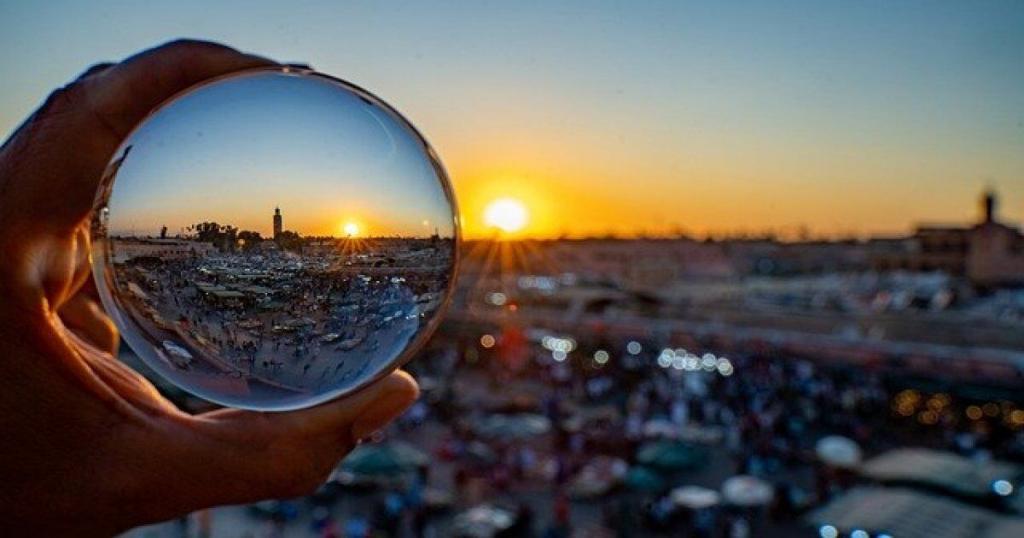
The birth and development of Marrakech (1062 – 1147)
Marrakech was founded in 1062 by Youssef Ben Tachfin. At first, it was a weak camp made of branches and different small places. Soon enough, with the arrival of the Almoravids dynasty, they built new solid constructions. Little by little, the city was developed with the help of Ben Tachfin who created good bases for wells, underground conduits, and water supplies. As a result, this allowed the city to live and fall in prosperity. In general, Youssef Bentachafin played a big role in the history of many Morocco cities not only Marrakech.
Marrakech then became the southern capital of the Maghreb, becoming more and more important in the region. In 1130 the son of the leader took over the control. He further developed the city in water arrivals, increasing culture and construction, and strengthening the capital. However, in 1147 the Almohad dynasty attacked Marrakech. Firstly, they were led by Ibn Toumert and then by his son Abd al-Moumin ben Ali. The religious fanatics killed a large part of the city’s population and then took total control of the city.
The recapture of Marrakech by ALMOHADS
Ben Ali, also called “the builder” represents the new Emir of the Almohad dynasty. He developed Marrakech by building various cult places such as the Koutoubia in 1157 and the Menara garden. His son, Abou Yacoub Youssef resumed his actions by developing the city in a stronger way. Such as the creation of the Kasbah mosque, new palaces, and religious buildings. Even more, walls to protect the city and public gardens make it more attractive. In addition, he put a strong emphasis on trade, which made Morocco city more captivating for newcomers. Also, more dynamic for the already settled inhabitants.
The striking period in the history of Marrakech
Abou Yacoub Youssef died in 1199. Then his son, Mohammed en-Nasir took over Marrakech and other Morocco cities. Being a Christian, he decides to settle in Fes and to set aside Marrakech, for his greatest despair. Thus, the Moroccan city was on hold for long decades, putting Marrakech in deep isolation for over 250 years. After that, the Saadian Ahmed Aredj took over Marrakech and renamed it the capital of Morocco. It was a short rebirth for “the red city” with the beginning of the conquest of trade with total control of the Niger River and Morocco. Thanks to the trade of gold from Sudan, Marrakech became richer. Unfortunately, not very long after the death of the Saadian leader, Marrakech was again abandoned aside from other cities in Morocco.
Marrakech becoming one of the most important Morocco tourist cities
In the twentieth century, under the French colonies, Marrakech totally lost its position as capital in 1912 to grant it to the city of Rabat. However, Marrakesh kept its habitats as well as all its heritage. The appearance of the old capital strongly inspired the construction of the new city of Gueliz. Also showing the importance and influence of Marrakech despite its loss of position. Today, more than one million inhabitants live there.
Marrakech is the 4th largest of all Morocco cities and there has been a meteoric rise in tourism. Indeed, it depends mainly on this sector which generates a lot of economy for the country. Tourists generally come to visit the palaces, the famous gardens as well as magnificent villas, atypical riads, and exotic tours.
The cultural city of Fes
The city “Medinat Fas or Fes” was founded by Idrîs I in 789 in the place of the current Andalusian quarters in the center of Morocco. In 809, Idris II founded “al-Aliya” on the other side of the wadi of Fes. Al Aliya grew very quickly and became a real city with a mosque, palace, and Kisariya (hall, market). The vital water sources around Fes were undoubtedly an important factor in the choice of location for the future metropolis.
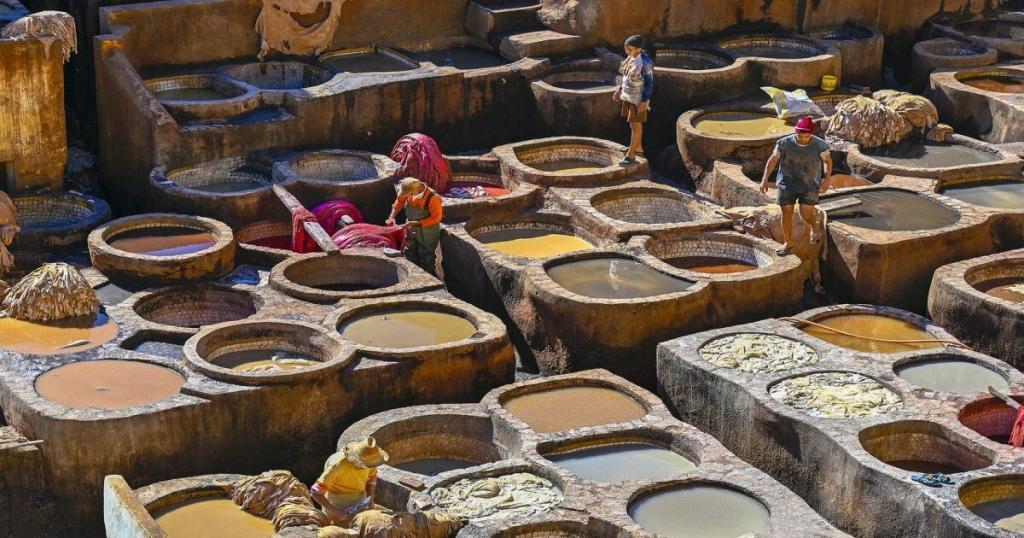
The following developments were due to two successive waves of emigration. Firstly, beginning in 817-818, almost 800 Andalusian families were kicked out of the Spanish city of Cordoba by the Umayyads. Shortly afterward about 2000 families banished from Kairouan settled on the other side of the river. The university mosque “al-Qarawiyin” founded in the ninth century became one of the most important spiritual and cultural centers of Islam.
The newcomers brought with them both technical and artisanal skills as well as a long experience of Moroccan urban life. Under their impulse, Fes became an important cultural center after the foundation of the Qairawin University mosque.
Fes is in a particularly attractive location in Morocco rather than the other cities. At the crossroads of important trade routes, in the heart of a naturally generous region with precious raw materials for handicrafts. Therefore, this helped the city to develop very quickly. Fes is on the caravan route going from the Mediterranean to Africa via the great commercial city Sidjilmassa in the region of Tafilalt.
Middle Ages
The two parts of Fes united in the Middle Ages, destroying the wall that separated them. Fes lost its role as the capital with the Almohad foundation of Marrakesh in the 11th century but regained it in 1250 thanks to the Merinid dynasty. Under their reign, the new city El Medinet El-Beida (the white city) was founded in 1276.
It was full of ramparts, palaces, and gardens. Soon enough, it was famous as Fez Djedid (the new Fez) in opposition to Fez el Bali (the old city). The Jewish population around the palace was forced to leave and the Mellah was formed in the ancient quarter of the garrison of Syrian archers. At the beginning of the fourteenth century (apogee of the Hispano-Moorish art), the city experienced strong growth. Thanks to the caravans going around the city, the university of Fes became known worldwide. Finally, in 1471, the city fell into the hands of the Beni Wattas dynasty.
16th-18th-19th centuries
In 1522, Fes suffered an earthquake that partly destroyed the city. In the following years, many buildings were replaced by new ones. The Saadian dynasty took Fez in 1554 but chose Marrakech as its capital. At the end of the 17th century, Moulay Ismail chose Meknes as the new capital. He installed in Fes a part of the Udaia clan who had helped him to gain power. After his death (1727), the Udaia revolt, they will be driven out of Fez only in 1833 by Abd er Rahman. Moulay Abdallah made Fes his place of residence and built new or renovated mosques, schools (madrasas), bridges, and streets.
In the 19th century, the two old parts of the city were connected to new constructions such as the Boujloud Palace. Until the beginning of the protectorate in 1912, Fes was the capital of Morocco.
The French protectorate and independence of most Morocco cities
In Fez, the treaty of French and Spanish protectorate (for the north of the country and Western Sahara) was signed on May 30, 1912. Less than three weeks after the signature, riots broke out in the city. Rabat has officially been declared the capital of Morocco. However, it remained an important royal residence and a cultural, craft, commercial but also political center. The Istiklal (Independence Party) was established in Fes by Allal El-Fassi. Many of the initiatives to kick out the French occupiers started from Fez. In 1944, the manifesto for independence was written in a house in the old Medina, today’s Place de l’Istiglal.
Under the direction of Lyautey and according to the plans of the architect Henri Prost. A new city develops in the vicinity of Dar Debibagh south of Fez Djedid. Although it was initially the residential area of the Europeans. The “new city” continued to develop as a modern Arab city with new villa districts. Authorities, institutions, and service companies settled there.
Fes currently
Currently, in Fes, there are about 1,400,000 inhabitants. It is one of the largest cities in Morocco and today the city is divided into two parts:
Fes old Medina is considered a UNESCO World Heritage Site for Morocco And Fes new city (Dar Dbibegh). Thus, it is in this part of Fes that modernity (shopping centers, buildings, 5-star hotels …) and culture meet.
In recent decades, tourism has continued to grow (1 million visitors per year) and has become an important economic factor. This has become all the more important thanks to cultural events such as the one held in June of each year < the Festival of Sacred Music of the World>.
Casablanca, the economic city
The history of Casablanca draws its foundations in its multiple identities which keep a pronounced taste for the crossbreeding of cultures, colors, and rhythms. Over the centuries, the city has undergone many influences: Roman, Phoenician, Arab, and Berber, then European and even American. The city’s attractiveness is due to its geographical location at the gates of Europe and America. Its position on the Atlantic coast in North-West Africa gives it access to various resources.
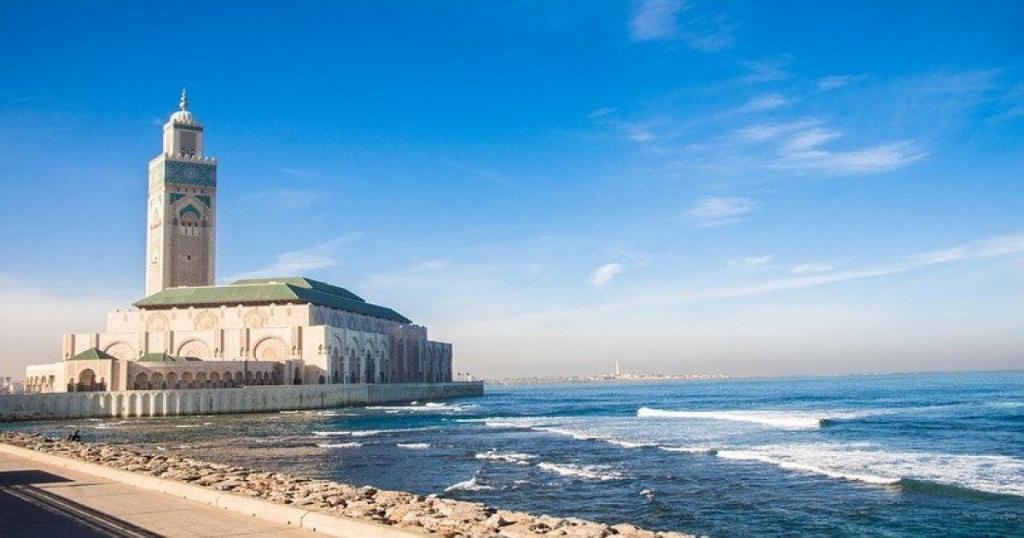
Benefiting from a central location on the Atlantic coast. The city was built on the site of the ancient medieval city of Anfa, which later became the small port of Dar-Al-Baida. The old Anfa was, in turn, built, then destroyed, then besieged, then rebuilt. The city experienced decadence and fell into oblivion for centuries before being reborn as Casablanca in the early nineteenth century. However, thanks to its wealth, port, and commercial activity. Casablanca is becoming the first among all the cities in Morocco and one of the most important agglomerations in Africa. While strengthening its position as a regional and continental hub.
Casablanca today, is the most important economic of all Morocco cities
Casablanca, modern, open, noisy, and colorful began to expand in the twentieth century. The result: an attractive city where multicultural populations have always mixed, living in houses with heterogeneous, avant-garde architectural styles. More importantly, it is where the reflection on architectural urbanism has always been present.
The economic capital of the kingdom offers the face of a megalopolis turned towards the future. The city is now the modern showcase of Morocco and its cities.
The real economic and financial engine of the national economy now accounts for 50% of the national GDP. Its port drains three-quarters of national trade. Furthermore, its international airport is the first in the country. The metropolis is also experiencing a change in its economy and is today deploying its assets in the tertiary and services sector, particularly in technology.
Meknes, one of the oldest cities in Morocco
Meknes was classified in December 1996 as a World Heritage Site by the Inter-Governmental Commission of the U.N.E.S.CO.
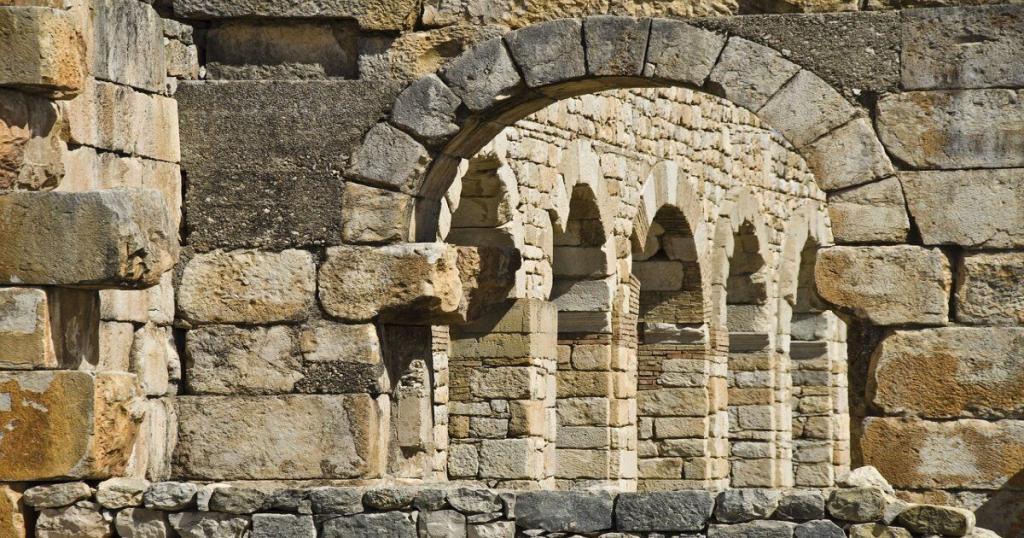
It is one of the four imperial cities in Morocco. During the reign of Moulay Ismail (1672 – 1727), it experienced a period of great prosperity. What remains of this era of greatness and previous eras makes this city an important stop on any trip to Morocco? Moulay Ismaïl chose Meknes as his capital for strategic, political, and geographical reasons. To situate the time, remember that it was Louis XIV who reigned in France. The known anecdote is the proposal of marriage of Moulay Ismaïl with one of the daughters of Louis XIV which did not take place, the suitor having already 3 wives. Full of humor Louis sent him three Comtois clocks that are still visible in the mausoleum.
The Kasbah of Meknes
In addition to its obvious architectural interest to even the least discerning tourist. The Meknes Kasbah is of singular importance because it is the first great work of the Alaouite dynasty. Indeed, a dynasty that has reigned in Morocco for over 300 years.
The Ismaili Kasbah in Meknes City is an integral part of the history of Moroccan architecture. Its monuments strike the imagination both by their apparent diversity and by their fundamental homogeneity. A certain number of doors particularly highlighted on the decorative plan (Bab Mansour Laalej and Bab Errih), give access to a palace or a sub-assembly or even to the Kasbah as a whole. It is essentially these doors that justify the name of “Meknes, the capital with beautiful doors”.
A glimpse into the history of this Moroccan city
The city has an impressive heritage and fascinating history. It takes its name from the Berber tribe of the “Meknassas” who dominated eastern Morocco until Tafilalet during the 6th century. It was, formerly, occupied by ancient civilizations, Romans, which have also built the city of Volubilis. The city will be conquered by the Almoravids in 1061 which will make it a military city. It will evolve thereafter, under the dynasty of the Almohades of Abdelmoumen, then of the Merinids. However, it was at the end of the XVIIth century that the city will experience an important development. At that time it was under the reign of the powerful Sultan Moulay Ismail, from 1672 to 1727, who will make it the capital of the Alaouite empire.
The objective of Moulay Ismail was then to transform the Kingdom into a great regional power. He knew how to equip himself with a powerful army capable of keeping the Portuguese, the Ottomans, and the local tribes away. Thanks to the wealth earned from the resale and exchange of Christians captured at sea by the corsairs of Sale. The Sultan started the construction of important buildings. Such as great walls several tens of kilometers long, mosques, and monumental gates including the famous “Bab Mansour” gate. He will also build the ambassadors’ pavilion, which will be used for exchanges and negotiations of captives.
Under this pavilion, a mysterious labyrinth, the Prison of Cara, where Christians captured at sea were kept. Little known, it is the largest underground prison, which covers a large part of the city. Even more, rumors even say that some people entered without being able to get out, others think it is haunted. After many misadventures by visitors, part of the prison is said to have been closed to visitors.
Rabat, The current capital city of Morocco
Facing the Atlantic Ocean, Rabat is bordered by a long ribbon of soft blond sand. The wide avenues are planted with palm trees. The golden ramparts of the old city embrace the houses of the modern city to the dazzling whiteness. Indeed, this city full of charm and not very touristy must be pleasant to live in. It is not too hot. The thermometer rarely exceeds 30°C because the ocean vaporizes a light veil of mist that tempers the heat of the sun.
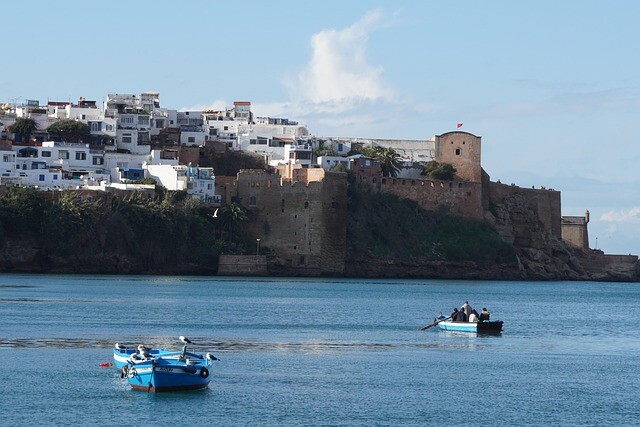
At the beginning of the 20th century, the city has named the capital in the place of Fez. Rabat became the political, administrative, and financial center of the kingdom. As a result, a major artery was traced, the street Mohammed V, lined with the post office, the train station, and the courthouse dating from the time of the protectorate. The Royal Palace of Rabat, Dar El Makhzen, is the center of government. It is a vast domain surrounded by its own enclosure which is not accessible to the public.
The Almohad Empire
The history of Rabat goes back to antiquity. At the outlet of the wadi(river), the excavations of the necropolis of Chellah have uncovered the remains of Roman dwellings. Rabat became the capital of the Almohad Empire in the 12th century. The Almohads are great builders. From this period remain the superb ochre walls of the city, the Hassan Tower, and the Kasbah of the Oudaïas.
The Hassan Tower
Emblem of Rabat, the Hassan Tower is a contemporary minaret of the Koutoubia of Marrakech. This massive 44-meter high tower which was to reach 80 meters high was built by Yacoub el-Mansour, Almohad sultan at the end of the 12th century. In fact, it was considered one of the largest mosques in Morocco that was never completed. It was destroyed by an earthquake followed by a fire in 1755 and only the 200 columns from the Volubilis site remain. Today, it is a huge open-air courtyard that gives a feeling of infinity.
Mausoleum of Mohammed V
A few steps lead to the Mausoleum of Mohammed V. The location is highly symbolic for the Moroccan people because it is there that Mohammed V, back from his exile in Madagascar, made his first Friday prayer before the declaration of independence. Overlooking the esplanade of the Hassan Tower, the Mohammed V mausoleum is guarded by men-at-arms in ceremonial dress. Moreover, it contains the tombs of King Mohammed V, King Hassan II, and Prince Mulay Abdullah. A masterpiece of traditional Moroccan art. This white, green, and gold building was built between 1961 and 1971. Everything is refinement, in a festival of noble materials.
Kasbah of the Oudaïas
Built on top of a cliff, facing the ocean, the Kasbah is a village within the city! It is accessed by a long ramp towered over by a powerful crenelated wall. Kasbah means fortress or fortified district in the city. It sheltered the Oudaïas, a tribe charged by Moulay Ismaïl to defend the city from the indomitable Andalusian pirates. Part of the enclosure, the Oudaïas gate, and the Jamaa el-Atiqa mosque date from the Almohad period, in the 12th century.
The kasbah offers a maze of narrow streets on the hillside. The houses are whitewashed in blue and white. There are very few tourists. You can visit it on foot and walk up the Jamaa street which leads to a fort that defended the Bou Regreg estuary. The view over the city of Sale and the ocean is breathtaking.
The descent leads you to the famous Cafe Maure, very popular with the inhabitants of Rabat. Its terrace offers a nice view of the boats dancing on the wadi. The ideal place to enjoy mint tea and an assortment of pastries. Honey cakes, gazelle horns, Feqqas with almonds and raisins … Irresistible!
The Andalusian Garden
Before leaving the fortified city, you can discover the Andalusian garden at the beginning of the 20th century according to the Arab-Andalusian tradition. Clearly, a real oasis of greenery and tranquility. In spring, it is an enchanting garden with the delicate smell of jasmine and orange trees.
Tangier, one of the important cities in the history of Morocco
Tangier, the northern bride as many like to call it keeps the traces of the incredible history with the legacy of the cosmopolitan atmosphere so particular, enigmatic, and bewitching, hence the charm of its enchanting mystery. The Moroccan city continued for a long time to occupy a unique geographical location. A crossing and meeting point between the Atlantic Ocean and the Mediterranean Sea, between North and South, between West and East, between Europe and Africa.
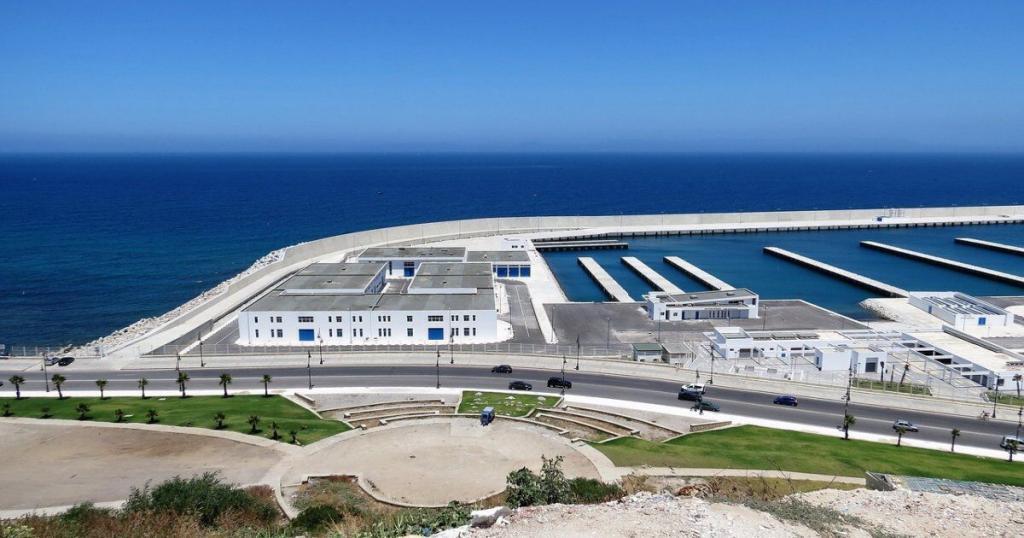
The area was home to several Phoenician trading posts between the 8th and 5th centuries BC. Before passing under the Carthaginian reign between the 5th and 3rd centuries. Also, became independent again during the extension of the Roman Empire into Gaul, Spain, and Carthage. From its Roman period, which lasted from 40 to 280, the region preserves sites that are very rich in archaeological materials. But, unfortunately very little is protected. Tamuda (Tetouan), Cotta (Ras Achacar), Zilil (Asilah), Lixus (Larache). As for Tingis, it was located under the current Tangier. From the passage of the Vandals in 429, which did not last more than a century, the Moroccan city did not keep any trace. There are also no traces of the Byzantines or Visigoths.
In 681, the region became a land of Islam with the arrival of the Arab army led by Oqba ibn Nafi. Then around 700 Moussa ibn Nusaïr, installed Tarik ibn Ziyad in Tangier in 707 with eleven thousand Berbers and Arab scholars to teach them the precepts of Islam and Koranic laws.
Under the great Muslim dynasties, the Umayyads, Almoravids, Almohads, and Merinids, the region remained a bridgehead between North Africa and nearby Andalusia.
The European covetousness
From the 15th century, the great colonial powers took over the city. Firstly, the Portuguese, in 1471, and then the Spanish. Later, the marriage of Catherine of Bragança to Charles II of England made it an English city in 1661. But the Moroccans rebelled and, after hard battles, Moulay Ismaïl took over the place in 1684. During the period that followed, Tangier remained coveted and developed little by little. Even if it became a residence place of international consular representatives in Morocco. Victim of the trials and tribulations of history, the city was attacked in 1844 during the Franco-Moroccan conflict.
Tangier, international zone
In 1905, William II chose Tangier to denounce the imperialist aims of Spain and France on Morocco. The solution to these incessant and antithetical lusts was the signing of the French protectorate in 1912. A zone of influence was recognized for Spain, but polemics persisted and a Franco-Spanish treaty was signed on December 18, 1923, which declared Tangier an international zone. The city was then managed by a dozen countries, and led by the representative of the Sultan, the Mendoub.
Out of the 150,000 inhabitants of Tangier, 42,000 were foreigners. 30,000 Spaniards, French, Portuguese, English, Italians, Americans, and refugees from Central Europe, Asia, and Latin America… European-inspired constructions were first in the medina, then outside in what we know today as the new city. It was a period of military and political neutrality, combined with complete economic freedom. Immense prosperity was generated by free trade and the abolition of taxes, which also gave rise to all kinds of trafficking. The Moroccan city was slumming and had great prosperity. Induced by this collaboration of national sovereignties preferring to let go rather than compete, drew its wealth from sources that were not very avowable.
Tangier’s independence
In Tangier, everything is traded, from money to women to drugs, and ideas were also exchanged. The city was a privileged place for artists, from painters like Matisse to writers like Tennessee Williams, and especially Paul Bowles, who will become Jack Kerouack and Allen Ginsberg one of the leaders of the Beat Generation.
The city will one time be the place of all the excesses and the most sumptuous parties, like those organized by the famous billionaire Barbara Hutton, who ended her days in 1979 without a penny. However, the Second World War rekindled Morocco’s desire for independence, and Sultan Mohammed V made a nationalist speech in Tangier in 1947, claiming national sovereignty. 1956 and the regain of independence made Tangier lose its unique status, and the city became Moroccan again, signing at the same time the mass departure of foreigners, a departure that greatly shook the local economy.
Tangier today
Tangier is worth a visit for its museums, the Dar el-Makhzen Palace and the American legation, its lively medina, the Petit Socco, and the incredible views of the Strait of Gibraltar from the surrounding area. The Kingdom is investing a lot to develop the region, the new Tangier Med port free zones should attract entrepreneurs from all sides and tourists are becoming more and more numerous. The dormant potential of the thousand-year-old city and its region may well emerge from its lethargy sooner than we think. Today, investors are flocking in numbers from Casablanca and Rabat, but also from Europe and the Gulf region.
Chefchaouen, the blue city
Perched on the Rif mountain range, at an altitude of 600 m at the foot of the Kelaa and Meggou Mountains in northwest Morocco. A little over an hour and a half drive south of Tangier, Chefchaouen is like a blue jewel, in the hollow of mountains covered with a dense forest of fir trees and cork oaks.
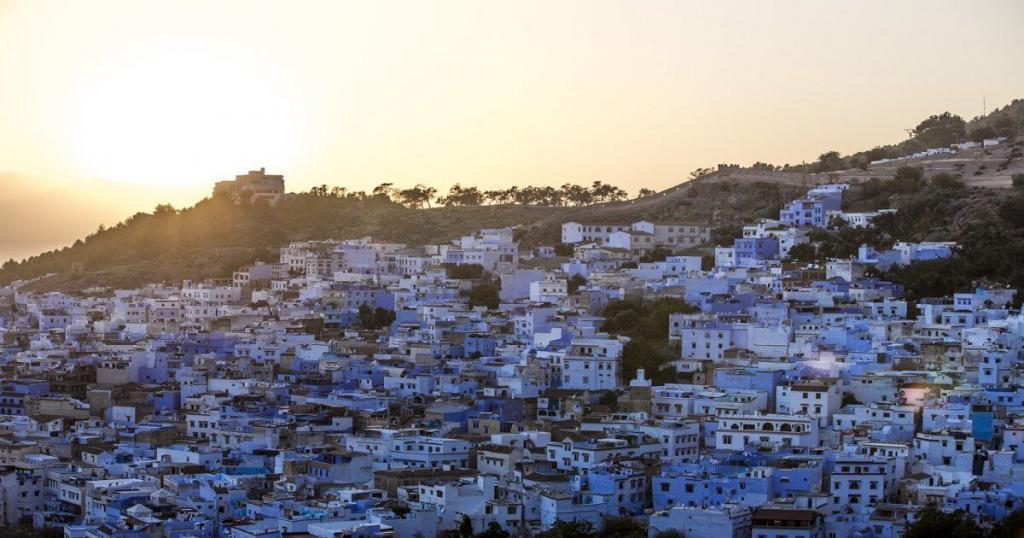
It is said that Chefchaouen is a name formed of two parts. Firstly, “chouf” which means “look” and second “Echaouen” which means “horns” in Berber. Probably, referring to the mountain peaks that surround the blue pearl. Characterized by a hilly landscape, deep valleys, and a vegetation cover, bordering the Mediterranean, the city with its mythical blue corridors. Painted with lime, offers a friendly and authentic atmosphere to anyone who would be lulled by its soothing atmosphere and its unreal beauty that make the place a true visual masterpiece.
Almost unreal, the small town, rich in color, with the thousand shades of that typical overseas blue of the city, intense and deep, attracts tourists in search of simplicity and beauty. When the sun sets, passing the relay to the lights, the city turns into something legendary and supernatural that makes it a pearl set with a thousand and one sparkling sparks. A sublime spectacle is then offered, in a most magical Mediterranean setting.
Tetouan
Crossroads of Mediterranean civilizations, Tetouan is a meeting place for various peoples, religions, and cultures. Andalusian, Ottoman, Arab-Berber, and European and various elements. Take the examples of Mudejares, Moriscos, Sephardic Jews from the Iberian Peninsula, which gave it the name “Daughter of Granada” or “Little Jerusalem”.
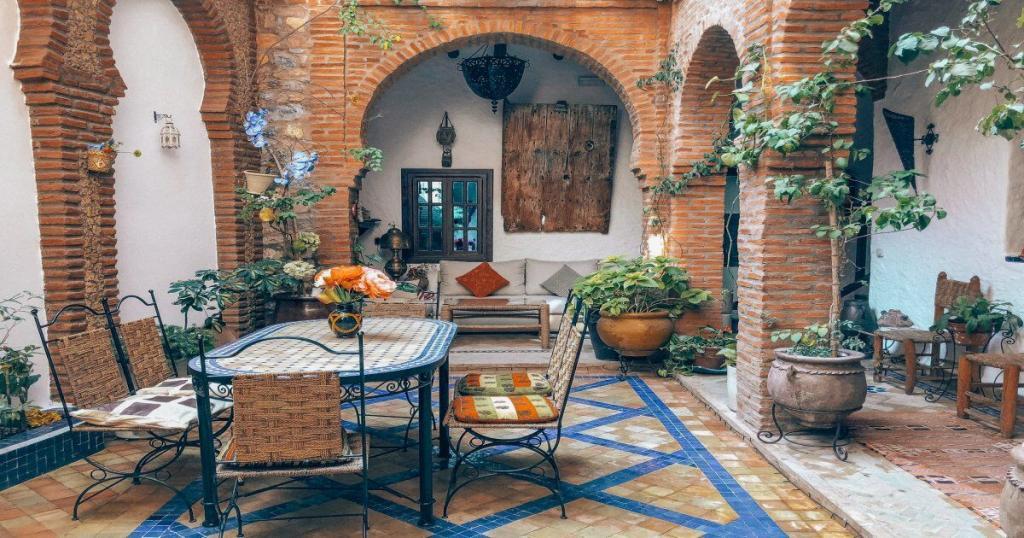
Tetouan has preserved most of the Andalusian architectural know-how in its walls, kasbah, fortifications, small houses and large residences, minarets, mausoleums, Fondouks, traditional water distribution network, and wall fountains. It also carefully preserved a unique and specific intangible heritage in craftsmanship, music, popular arts, and traditions, and customs through its clothing and culinary heritage.
Tetouan, from the ancient city to the modern city
Archaeological excavations from the ancient city of Tamuda, located two kilometers from Tetouan on the south bank of the River Martil, date from the third century B.C. and testify to the early settlement of this area. Indeed the Mauritanians founded this city first. However, the Phoenicians established a trading post at the mouth of the river. The city was destroyed by the Romans in 42 AD.
Tetouan seems to have existed since the Arab conquest, it was famous for the name of Tittawin which means springs in the Berber language. The site of Tetouan is mentioned in the XIth century by the Andalusian geographer Abou Ubayd al-Bakri (1030-1094).
During the 12th period
It was during the Almohad period, in the 12th century, that the city appeared in Moroccan sources. Historians attribute the foundation of this city to the Andalusian Sufi Sidi Abdelkader Tabine who settled in Tetouan around 1148 and began by building a group of houses, a mosque, mills, and a place for the Souk.
The growing impact of war and piracy threatening the Iberian hegemony led to the destruction of Tetouan by Henry III of Castile in 1399 and in 1437, by the Portuguese of Sebta. Tetouan disappeared, then, briefly from the texts.
Tetouan in the 15th period
The reconstruction of Tetouan at the end of the 15th century by the Grenadin Abou Al Hassan Ali Al-Mandri will mark a turning point in the history of the city. Indeed, in 1492, the fall of the kingdom of Granada caused the migration of thousands of Muslims to the coastal cities of Morocco. As a result, Tetouan was reborn from its ruins and experienced remarkable growth at all levels.
In 1609, the decree of expulsion of the Moors and Jews issued by Felipe III led to a wave of exodus to the Maghreb countries and in particular to Tetouan. More than 10,000 Moors settled there, leading to the extension of the city through the construction of new neighborhoods.
Under the reign of Moulay Ismaïl, in the 18th century, Tetouan underwent a new economic development due to its numerous exchanges with the West. All Moroccan trade with Europe in the 18th century passed through Tetouan. Clearly, its port of Martil was at the time one of the most important ports in Morocco.
After the occupation of Algiers by the French in 1830, Tetouan received hundreds of Algerian immigrants, hence the importance of the Ottoman influence in Tetouan was visible in certain Tetouanese customs and clothing in particular.
The 19th century was a time of decadence for Tetouan as for all of Morocco. The drought with its procession of famines and epidemics, as well as the Spanish-Moroccan war or “Tetouan War” from 1859 to 1862. All of this led to the occupation of the city, and contributed to the momentary decline of its political and economic role in the Moroccan scene.
From around the 20th century period till now
In the 20th century, Tetouan became the capital of the Spanish protectorate from 1913 to 1956. Thus, resumed a new political, economic, and cultural development that resulted in a tremendous expansion in urban and industrial areas. Also, pioneering cultural roles and a notable presence on the political scene through its contribution to the foundation of the national liberation movement.
Currently, Tetouan remains one of the major academic poles and cities of Morocco, and with its hinterland, it is an attractive cultural and tourist destination.
Agadir
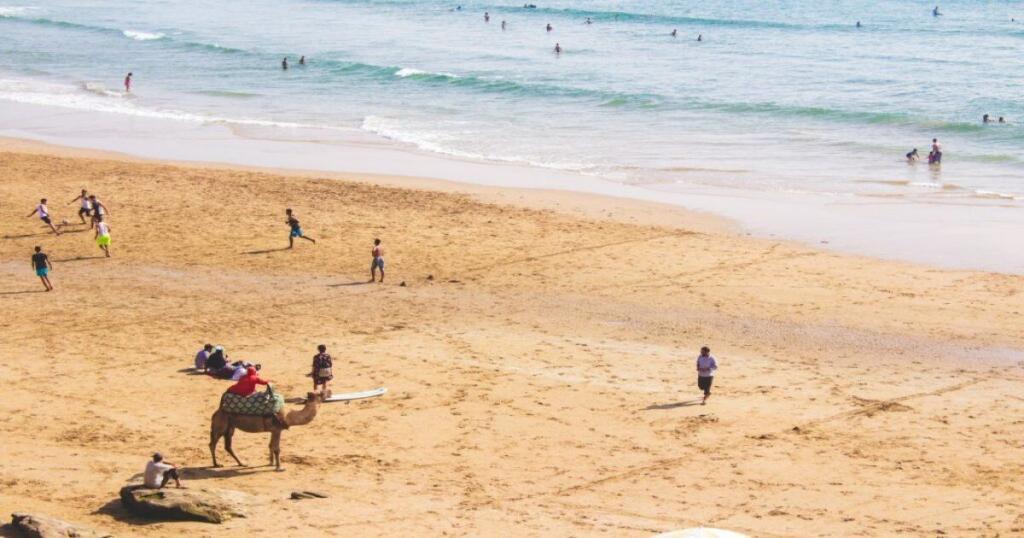
Santa Cruz de Cap de Gue
Agadir has sometimes been identified with the old port of Russadir cited by Polybe. However, it is only in 1505 that the place enters history with the construction, by a Portuguese nobleman, of a fortress named Santa Cruz de Cap de Gué, north of the current city. Sold in 1513 to the King of Portugal, the fortress became the center of a region under Portuguese rule. After several attempts, the Saadian Sultan Mohammed Ech Sheikh seized it in 1541.
The port of Souss
Under the Saadians, Agadir experienced real prosperity. They landed with different commodities, while the port exported cane sugar, dates, wax, rawhides, gold, etc. On the other hand, the gradual extinction of the sugar cane culture, from the middle of the 17th century, marked the beginning of its decline. A century later, in 1760, Sidi Mohammed ben Abdallah punished the city for its indocility, by closing the port to European traffic and founding the rival port of Essaouira. The traveler Cochelet, who visited the city in 1819, has only a dozen houses still standing.
The Kasbah
It was built in 1540 by Mohammed Ech Cheick to serve as a base for an attack against the Portuguese fortress. Fearing an offensive return from the Portuguese, Moulay Abdallah rebuilt it in 1752 and installed a garrison of 2000 renegades and Turks. An inscription in Arabic and Dutch reminds us that the Netherlands set up a trading post there in 1746.
Things to see and do in this Moroccan city
The beaches of fine sand and crystal clear water, the souk, and the ruins of the old city are some of the many things to do in Agadir. The city offers a wide range of possibilities for travelers. Without a doubt, in Agadir, there are different options that correspond to the tastes of all types of tourists, to be able to rest on the beach, in the desert for more adventurous, or to wander in the history of the city.
The sea is a keystone of the city which is parallel to the coast, so one of the things to visit in Agadir is its marina and promenade always full of activities. Besides, one of the places to visit in Agadir is the National Park of Souss-Massa, a must for nature lovers, who want to enjoy the landscape. But you can say that one of the most beautiful places in Agadir is the ruins of the Kasbah and the old city which were destroyed in 1960 by an earthquake.
Enjoying the view of Agadir from the old city is one of the best things to do in Agadir today, especially at sunset. Near the ruins, the modern city, the new medina, one of the places to visit in Agadir. The city rebuilt after the earthquake is a mixture of old and new, modern and traditional, a place adapted to the changing times but has kept its true roots, where you can taste the essence of Morocco.
Before leaving the city, you can bring back an authentic souvenir of Morocco, by visiting the best market in Agadir the Souk El Had, the largest in the region and where you can find all kinds of typical products. From handicrafts, argan, henna, honey…
Essaouira
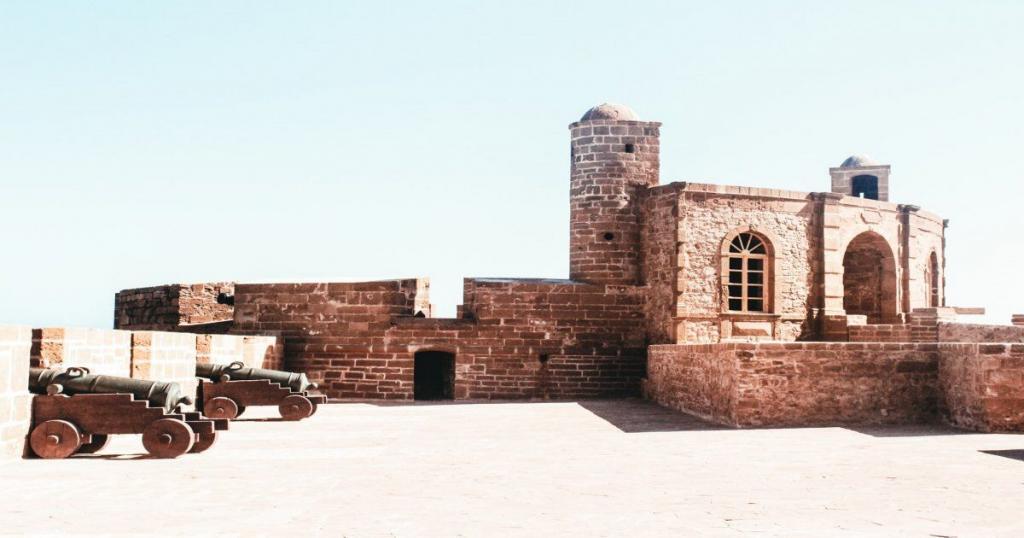
Essaouira was officially founded in 1765 by Sultan Sidi Mohamed Ben Abdellah. This provided the capital Marrakech with a new port and weakened the Souss revolt by asphyxiating the port of Agadir. This geopolitical decision also reflects the will to make Essaouira the first planned new city in Morocco. In general, a city populated by immigrants of all backgrounds and faiths. Its founder had thus allocated territory to each “ethnic group”. Chbanates, Ahl Agadir, Laalouj, Beni Antar, Bakher, and Tujjâr as-sultân (literally the traders or merchants of the Israeli sultan).
The latter were mostly Jews of Andalusian origin living in the kasbah known as “Mellah”. While their other co-religionists (craftsmen, shopkeepers, peddlers) lived in the lower town. Some authors trace the origins of a large number of Jewish families from the Mellah of Essaouira to the Souss. They also include those of Rabbi Haim Pinto and Rabbi Ed-Dery who lived in Agadir. However, according to Omar Lakhdar, the Jewish-Berber etymology of Mogador indicates the presence of a Jewish community before the foundation of the new city by the Sultan.
Essaouira and its important role in all Morocco cities
Essaouira, Formerly Amogdul (the well kept) in Berber, Mogdura in Portuguese. Also Mogadur in Spanish and Mogador in French, Essaouira is a port city in Morocco on the Atlantic coast. Its medina is on the UNESCO World Heritage List.
Its history goes back to the VII century B.C. The Phoenicians used to stop in the island of Mogador on their way down to the equator. Juba II, king of Mauritania, later established a purple factory there, which was much sought after by the Romans. Then, the site was occupied in turn by the Portuguese and the Saadian sultans. The true founder of the city of Essaouira was the Alaouite Sultan Sidi Mohamed Ben Abdellah who entrusted the layout to Theodore Cornut (pupil of Vauban) in 1760.
Essaouira (formerly Mogador) quickly became the port of Timbuktu. It is where products manufactured in Europe are exchanged for gold, salt, sugar, and ostrich feathers. More recently, Essaouira became the privileged refuge of artists and stars of the time (Cat Steven – Jimmy Hendrix…) who came here to recharge their batteries, and Orson Welles shot his famous film “Othello”.
Al-Hoceima city
Al-Hoceima is a tourist city located on the Mediterranean Sea in the region of Rif. Generally, in the north of the Kingdom of Morocco.
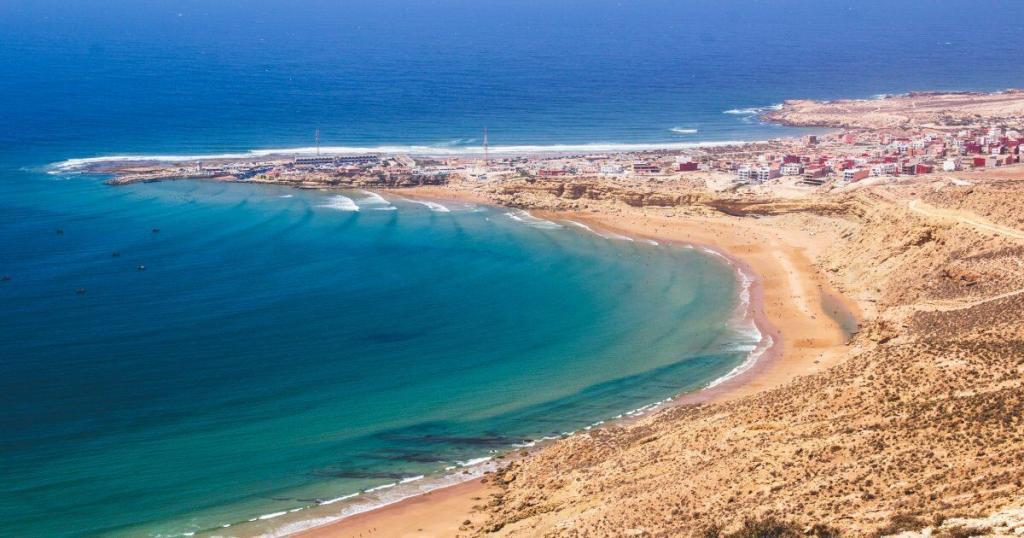
The city is Amazigh-speaking and has a population of about 56716 inhabitants. Moreover, It is the seventh most beautiful city in the world in terms of the beauty of its beaches according to a survey that included Morocco and made by the World Urban Cities Guide. The classification is carried out on the basis of several criteria including the beauty of natural landscapes and beaches. This and many other features gave Al-Hoceima the place of the most beautiful city in Morocco followed by Agadir. It is one of the largest seaside resorts in Morocco and North African cities.
What makes This city more unique is being offshore of many small and rocky islands. Al Hoceima is known for its beautiful beaches (Sfiha, Calabonita, Tara Youssef, Cala Iris, Imoud, Izdi, Boussekkour, Quemado…)

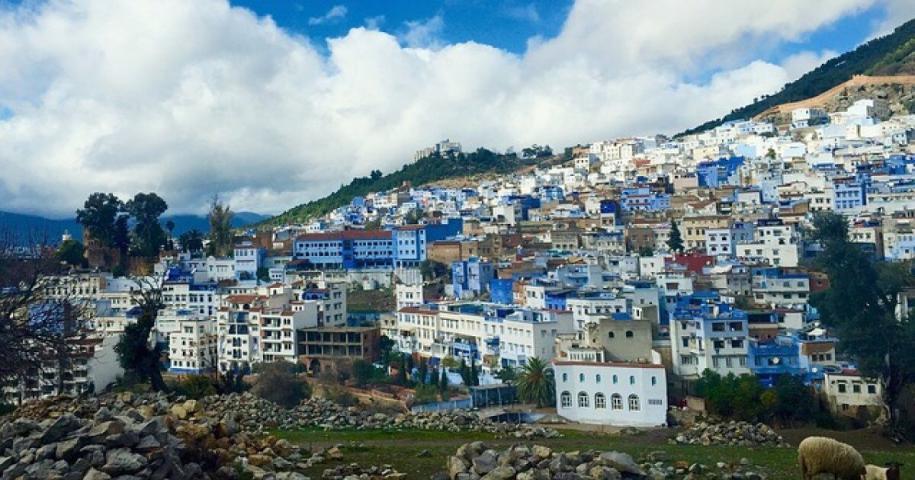
Leave a Reply